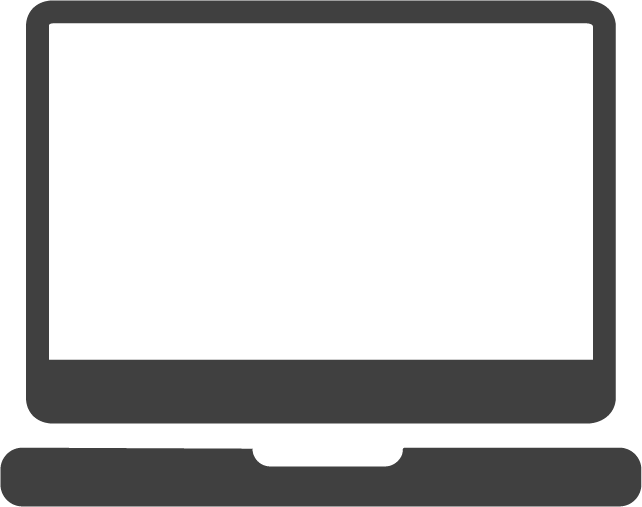Who are you
Consumers
Consumers role
As consumers buy more and more products, product lifecycles consistently decrease. This increases waste volume, such as discarded packaging, batteries, and disused devices. Simple solutions can relieve the pressure.
Effective recycling solutions benefit people, businesses, and the environment. And they are needed more than ever at a time when waste volumes are increasing and efficient ways must be found to recycle electronic devices, batteries, bottles, paper metal, glass, packaging, and more.
Services
Consumer involvement: What can be recycled?
We believe recycling should be simple. However, the participation of all of us, as consumers or citizens is crucial to make it happen.
Our pyramid of decisions and behaviours to promote a circular economy begins in the shop when we choose our product. Do we consider its energy efficiency? Do we verify if the product is recyclable or has recycled materials?
During usage, we should bear in mind some maintenance and care measures to extend our product’s life cycle, including reuse and repair. If there is no option for the product than recycling, let’s give it a second life!
Recycling of waste from A to Z
After being collected, waste is sorted by groups with different characteristics and treatment requirements to be recycled when not reused. The loop is closed when raw materials are reintroduced into the production system.
Learn about the recycling process by selecting the icons below.

Services
Recycling materials for a healthy environment
Recycling saves valuable raw materials and conserves energy. Our planet’s resources are finite. Only increased use of secondary raw materials can stop the linear economy and conserve available resources.
Our space is finite; landfills poison our environment with hazardous, toxic substances.
A safer and greener environment improves the quality and enjoyment of our lives.
Recycling means we consume fewer materials, have less waste to treat, and spend less energy mining and refining new raw materials.
Recycling
What can be recycled?
We believe recycling should be simple.
However, with so many types of products and materials, and multiple packaging symbols, it’s not always easy to distinguish what is recyclable from what isn’t.
To help simplify things, we’ve assembled an interactive guide of what you can and can’t recycle, with some general information about what happens during recycling and what can be reused.
Learn about the recycling process by selecting the icons below.
Large domestic appliances
Washing machines, tumble dryers, dishwashers, cookers. The first phase of recycling is decontamination. Cables and other electrical components are removed; ballasts, plastics, iron compounds and other metals are separated and recovered. These materials are then sent for further processing and recycling.
Recyclingprocess
1. Pre-sorting decontamination
2. Shredding
3. Separation
Recycled material
Cables
Concrete
Condenser
Plastic
Ferrous Metal
Non-Ferrous Metal
Cooling appliances
Refrigerators, freezers, automatic machines for cold products.
The products include refrigerators, freezers and all appliances with cooling units such as water coolers. Some appliances also contain refrigerant gases classified as ozone-depleting substances (ODP) such as chlorofluorocarbons (CFCs), hydrofluorocarbons (HFCs) and hydrochlorofluorocarbons (HCFCs) which are now banned.
These gases are captured and processed in ODP extraction facilities. Cold appliance cleaning involves a number of processes: compressors are decontaminated to recover ODP and oils; insulating foam is treated to restore ODP; metals are salvaged and resold, and plastics can be reused for new products.
Oils and ODP are destroyed in a specialized treatment process.
Recycling process
1. Decontamination
2. Shredding
3. Seperation
4. Foam decontamination
Recycled material
Gas
Oil
Condenser
Plastic
Ferrous Metal
Foam
TV and screens/Display equipment
TVs, monitors, LCD, PC monitors.
Display equipment includes cathode ray tubes (found in old-fashioned TVs and computer monitors) and flat-screen TVs and computer monitors, such as plasma and liquid crystal (LCD) displays.
Cathode ray tubes (CRTs) contain dangerous phosphor powder, lead glass, copper and other rare metals. These materials can be reused to make new products. Panel and funnel glass from the cathode ray tubes are also recycled. The coating on the funnel glass is removed and the glass is cleaned for new CRT production.
Most LCD TVs use mercury lamps to illuminate the screen. To remove the lamps, the device must be disassembled before processing the LCD screen. Research is currently underway to develop more efficient, automated solutions.
Recycling process
1. Manual disassembly
2. Cathode ray tube separation
3. Crushing and removal of metal
4. Glass cleaning
Recycled materials
Ferrous metal
Non- Ferrous metal
Screen and electronics
Circuit board
Leaded glass
Non-Leaded glass
Small appliances
Vacuum cleaners, sewing machines, irons, toasters, electric knives, hair dryers, radio sets, electric and electronic toys, fixtures;
This is the most complicated WEEE stream as a wide range of materials can be recycled: wood, metal, plastic, glass and cardboard.
This category includes appliances for cleaning (e.g. vacuum cleaners, carpet sweepers, etc.), appliances used for sewing, knitting, weaving and other processing of textiles, irons and other appliances for ironing and other care of clothes, toasters, deep fryers, grinders , coffee machines and equipment for opening or sealing containers or packages, electric knives, apparatus for hair cutting, hair drying, brushing teeth, shaving, massage and other body care appliances, clocks, watches and equipment for measuring, indicating or recording time, etc.
These devices are shredded, and plastics are separated from metals. Initial decontamination includes removal of ink toners, cartridges, batteries and cables.
Recycling process
1. Manual disassembly
2. Crushing and removal of metal
3. Picking station
4.Shredding
5. Seperation
Recycled materials
Cables
Waste
Plastic
Fine materials
Iron holding Metal
Non- Iron holding Metal
Individual components
Gas discharge lamps
straight fluorescent tubes, compact fluorescent tubes, low-pressure sodium lamps, LED lamps.
This category includes fluorescent tubes and low-energy light bulbs, also known as compact fluorescent tubes (CFL), while old-fashioned incandescent lamps and halogen lights are not categorized as WEEE.
Lamps are crushed and washed or treated in pressure vessels. Specialized machines are used to remove dangerous mercury and phosphorus. The remaining material is then sorted into glass, metals and plastics.
Phosphorus powder and recovered mercury can be reused to make new lamps. The broken glass can be used for oven linings or, if it is clean enough, to make new lamps. Aluminum end pieces are melted, and other metals are recycled.
Recycling process
1. Shredding
2. Seperation
3. Dust recovery
Recycled materials
Ferrous meta
Non- Ferrous metal
Mercury
Photovoltaic panels
Silicon-based PV panels require normal flat glass processing and no special removal of the semiconductor layer.
Non-silicon-based PV panels require special semiconductor removal technology and isolation of toxic heavy metals.
Recycling process
1. Remove cables, plug and semiconductor
2. Separate aluminum and glass from the PV module
3. Remove labels
4. Reuse or recycle the EVA film and recover chemical elements such as cadmium and selenium
5. Separate into fractions (EVA film, aluminium, wafer, cable and plastic plug, semiconductor, glass)
6. Recycle the glass fraction in a smelter
Recycled materials
Leaded glass
Components
Plastic
Leadfree glass
Cables
Metal
Cadmium
Batteries
Small producers
You may only place small amounts of batteries onto the market but need a trusted, reliable partner to carry out your obligations. We can do this for you.
Large producers
If your company places significant amounts of batteries onto the market, we offer competitive compliance solutions, as well as expertise in take-back and awareness-raising campaigns.
Recycling process
1. Sorting
2. Shredding
Recovered materials
Plastic
Lead
Cobalt
Nickel
Metal
Manganese
Acid
Mercury
Zinc
Cadmium
Recycling Process
- Collection
- Separation
- Decoating (if coated)
- Melting
- Casting
- Manufacture
Recycling Process
- Collection
- Treatment (including sorting, cleaning and decontamination)
- Crushing and melting
- Manufacture
Recycling Process
- Collection
- Processing (including de-inking, cleaning and screening)
- Manufacture
Recycling Process
- Collection
- Compacting
- Melting
- Casting
- Rolling
- Manufacture
Recycling Process
- Collection
- Sorting and separation
- Shredding
- Treatment
- Manufacture
Recycling Process
- Collection
- Segregation
- Decontamination
- Production
- Final products
IT Equipment
Centralized data processing:
• Mainframes, minicomputers and printer units
Personal data processing:
• Personal computers (CPU, mouse, screen and keyboard included), laptops (CPU, mouse, screen and keyboard included), laptops, notebooks
• Printers, copying equipment, electric and electronic typewriters
• Pocket and desktop calculators
• Other products and equipment for collecting, storing, processing, presenting or communicating information electronically
• User terminals and systems
• Fax machine (fax), telex, telephones, pay telephones, wireless telephones, mobile telephones, answering machines
• Other products or equipment for the transmission of sound, images or other information via telecommunications
Recycling process
1. Inspect
2. Cleaning
3. Data sanitization
4. Repair
Recycling process
1. Decontamination
2. Shredding
3. Separation
Recycled materials
Cables
Screens
Capacitors
Plastic
Metals
Batteries
Circuit board
